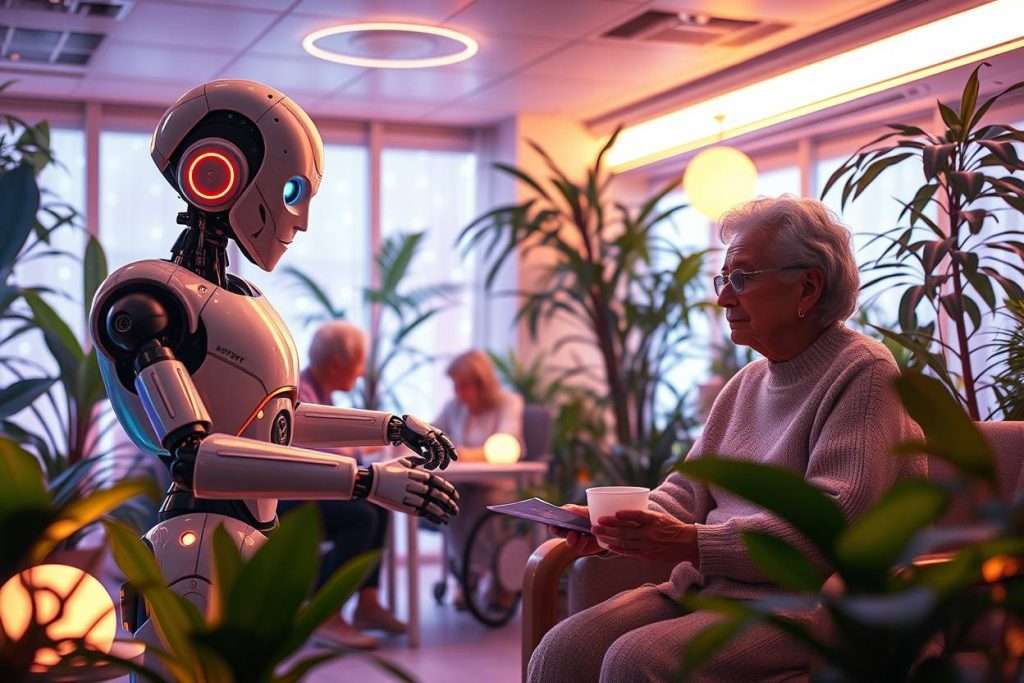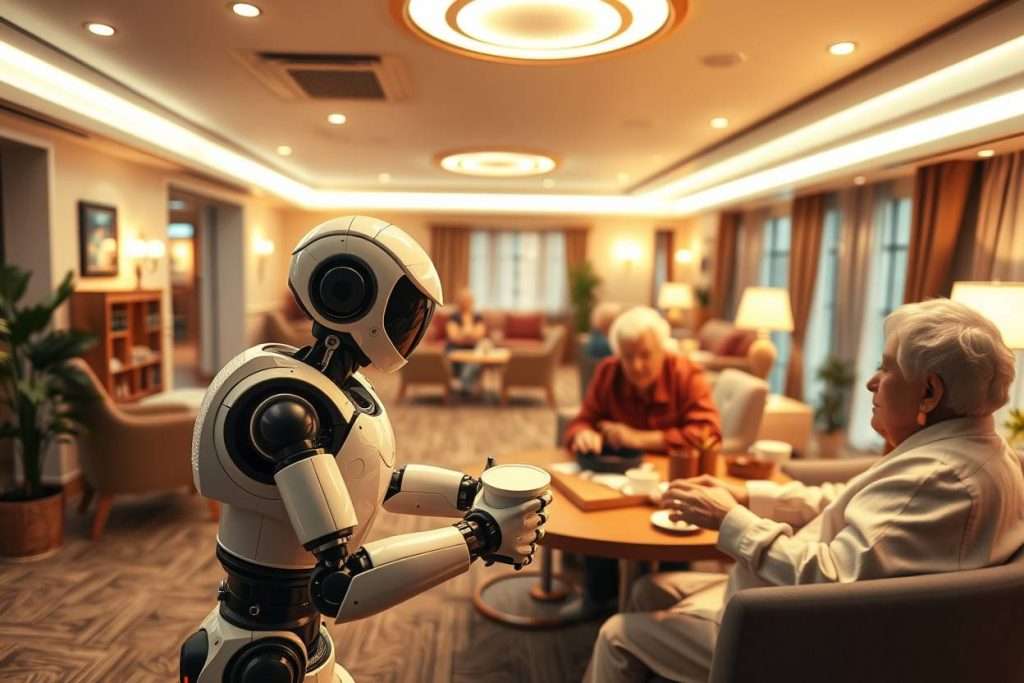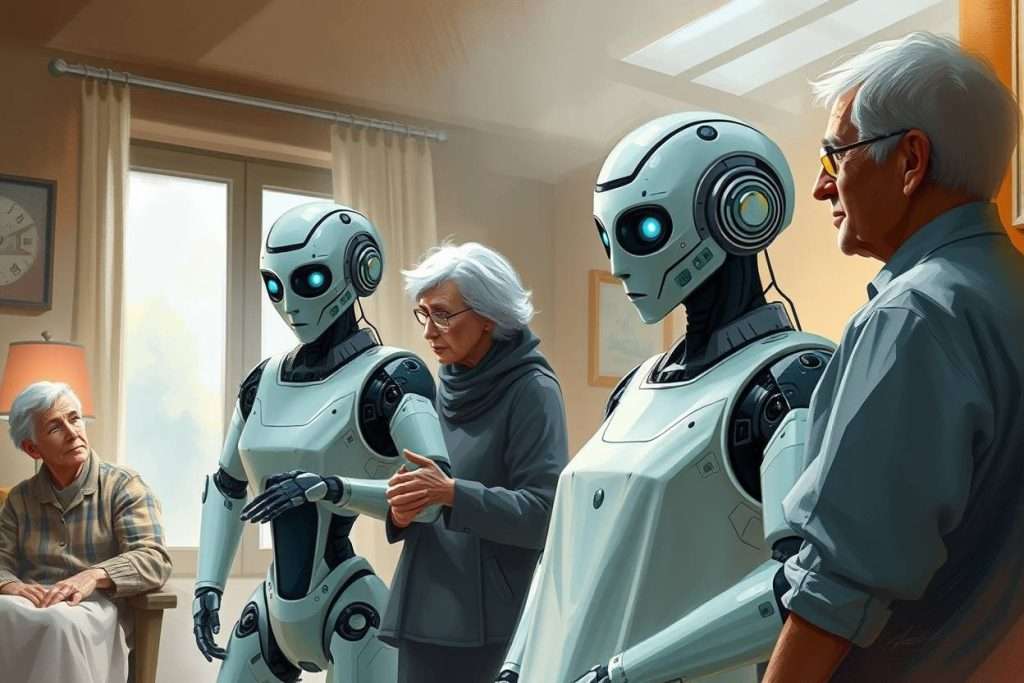Robotics in Elderly Care: balancing assistance and human touch

As populations age globally, the number of elderly individuals needing care is rising, but there are fewer younger workers to take care of them. This creates a huge amount of pressure on healthcare systems, families, and the elderly themselves.
And so to help us deal with this problem, countries across the world have been developing a whole host of robotic solutions for elderly care. There are now robotic mobile assistants that help with physical tasks and even AI-powered companions that alleviate loneliness.
But can robotics in elderly care truly help us address this issue? In what ways can they help us take care of the older generations? Or will they cause even more problems and complications? How do we balance the convenience of mechanical assistance with the irreplaceable warmth of human touch?
Key takeaways:
- Robots assist, not replace, human caregivers – They support with tasks but can’t replicate empathy or emotional intelligence.
- Boosts elderly independence – Robotic aids help with mobility, reminders, and routine tasks, reducing reliance on others.
- Combats isolation – AI companions offer social interaction and mental stimulation to ease loneliness.
- High costs and complexity limit access – Most robotic systems are expensive and not user-friendly for seniors or caregivers.
- Ethical concerns must be addressed – Issues like privacy, trust, and accountability are critical as adoption increases.
The Benefits of Robotics in Elderly Care
The elderly face many physical, cognitive, and emotional struggles as they get deeper into old age. With the development of AI and robot assistants, seniors and caretakers can have an easier time.
Despite the technology being in its infancy and only being used in some areas of the world (such as Japan and Scandinavia—rich countries but with severely aging populations), we can see the many ways it can be of service.
Physical Assistance
Many older adults are no longer completely independent due to physical limitations. Robotic systems like exoskeletons can help seniors walk, stand, lift objects, or even provide toileting assistance without the help of another person.
More advanced systems can even fetch items for them or assist with cooking or other routine tasks. This allows seniors to perform daily tasks with much less strain and frees up caretakers to cater to seniors’ more complex needs.
Cognitive Support
With many seniors suffering from some form of dementia, many now lack the cognitive sharpness for important tasks.
Here’s where robot assistants can help them by:
- Reminding them to take medication;
- Reminding them of doctor’s appointments;
- Providing clarification in unfamiliar environments;
- Dispensing the correct dosages;
- Documenting health data.
With this, seniors, their families, and caregivers can have more peace of mind that they don’t make small mistakes that can spiral into larger problems.
Social Companionship
Social isolation is also another severe issue. With many of their loved ones having passed away before or being in faraway places, many of the elderly struggle with high levels of loneliness.
With the advancement of large language models, AI companions like PARO, the robotic seal in Japan, or ElliQ, a conversational assistant, help the elderly feel less alone. They can engage in conversation and play simple games with them, which even helps combat dementia in the process.
In fact, this isn’t just useful for the emotional support for elderly: 49% of all large language model (LLM) users report using them for mental health support.
Of course, no robot will come close to authentic human interaction. But they can serve as interim companions whenever other people are unavailable.
Monitoring and Safety
Human caregivers can’t have their eyes on their elderly patients 24/7. This is where AI-powered camera and monitor systems can be very useful. By monitoring their movement, they can detect falls or identify unusual behavior patterns that may signal a health crisis (such as a stroke or a heart attack).
These devices are often connected to emergency services or the devices of family caregivers and members, allowing them to respond quickly to any emergency. For instance, if an elderly person falls out of bed, these robotic assistants can automatically alert caregivers and loved ones.
Challenges and limitations of robotics in elderly care

Robot assistants for the elderly are already promising, and they’re bound to get better as tech progresses. However, it’s important to consider the many limitations they will most likely have.
These challenges don’t negate the value of robotics in eldercare. Rather, they underscore just how important it is to design and deploy them in a responsible, human-centered manner.
- Cost and Accessibility
Robotic systems are very expensive—so expensive that only the wealthy can realistically afford them. Aside from the high upfront costs, maintenance, updates, and even training will incur regular expenses.
In the US, for example, robotic assistants can cost up to $85,000 per year. That is more than the average annual income in the country. Hopefully, as this technology evolves and becomes more widespread.
Technological Complexity and Usability
Many seniors aren’t the most tech-savvy. Combine that with the fact that many are cognitively impaired with conditions like dementia, and they may struggle to use even simple digital tools.
In fact, with how new and complicated this technology is, even younger caretakers may have trouble operating or maintaining these robots. So, in some cases, instead of making their jobs easier, they make it more difficult.
Users and caretakers may feel frustrated, confused, or even afraid whenever robots malfunction or behave unpredictably. It’s one of the reasons why some robot assistants get shelved after purchase.
Lack of Emotional Intelligence
But emotional intelligence is paramount when taking care of the elderly. While robots may simulate conversation or even recognize facial expressions, they can never fully grasp the nuance and subjectivity of the human experience.
For seniors experiencing grief or depression, a machine’s response can feel hollow—and make them feel even worse—if not thoughtfully designed or if they lack human interaction in general.
As a baseline, they need to be culturally sensitive, non-confrontational, and know how to defer to human oversight when needed.
Skepticism
Elderly care is an intimate endeavor. Seniors need to trust their robot companions and feel safe and comfortable being served by them.
Many seniors are understandably skeptical and may feel even more distressed in the presence of robot assistants. They may also be wary of giving these AI robots highly personal data about their health and personal lives.
Using a secure ChatGPT VPN can help protect sensitive data when connecting robotic systems to remote caregivers or cloud-based services.
Job Displacement Concerns
Many caregivers are underpaid and overworked. And now, with these AI-powered robots, many fear getting displaced. This is especially true among low-income or migrant workers who make up a large part of the caregiving workforce.
Robots should always only augment rather than replace, especially in such an intimate and emotionally-charged environment such as elderly care. But it cannot be denied that some places may become overly reliant on robots that they choose to lay off human workers.
Ethical Grey Areas
Who is accountable if a robot makes a mistake?
For example, if a robot incorrectly administers medication or fails to detect a fall, the seniors involved can suffer severely.
The more we rely on these autonomous systems, the clearer legal and ethical frameworks for liability, consent, and autonomy need to be.
Looking ahead: what’s next?

In addition to improving upon these areas, many advancements to robo-caregivers are already on the way, such as:
- Predictive Analytics
With predictive AI, we can forecast health events based on the behavior and medical history of elderly patients with greater accuracy.
- Biometric Integration
In addition to monitoring behavior, we might soon see advanced monitoring technology for heart rate, blood pressure, and even emotional state.
- Customizable and Adaptable Personalities
The robot assistants of today come with a preset “personality” based on their algorithm. But what if we can customize or train them to be better suited to the seniors they will serve? What if it can adjust its responses on the fly?
Conclusion: People First—Always
Overall, the biggest concern with having robots in caregiving is the risk of dehumanization. This is especially true in a field where empathy and humanization are at the core of everything done. And while a machine can do many things, things that even the best of humans cannot do, robots and AI companions cannot care.
Of course, these robot assistants can and should be designed to respond as empathetically as possible through tone modulation, facial recognition, and gestures that simulate emotional understanding. But no machine can replicate the authenticity of human touch and emotion.
As such, robots should augment, and never replace, human caregivers. No matter how advanced they become, robots and AI for elderly will always remain tools and should therefore serve people.
How well robotics can help us depends on how thoughtfully we conceptualize and use it. We need to think of robots as supportive infrastructure. Policy, training, and messaging must revolve around empowering human caregivers with these tools, not rendering them obsolete.
After all, in the realm of caregiving and relationships, humanity will never be considered obsolete.




